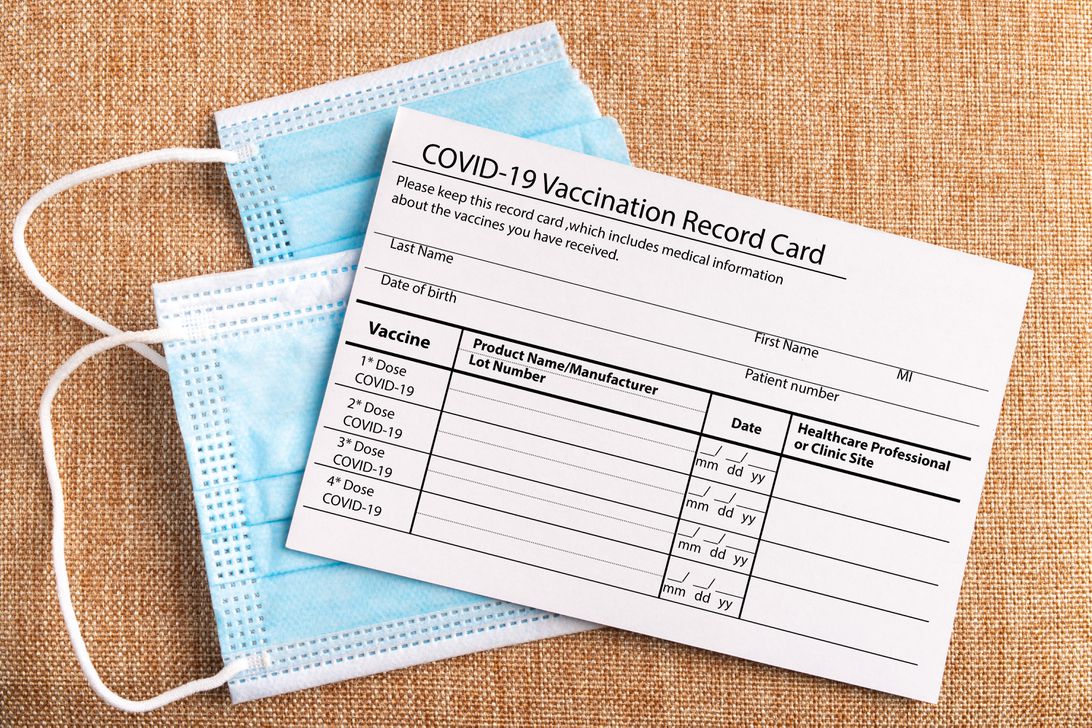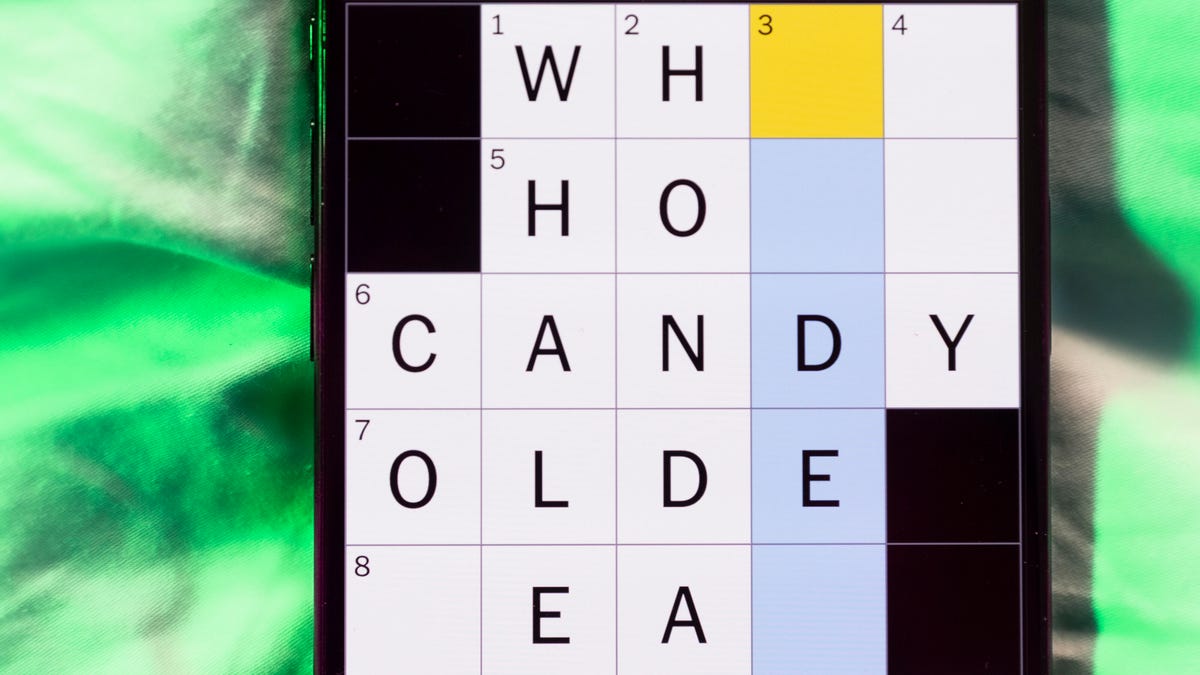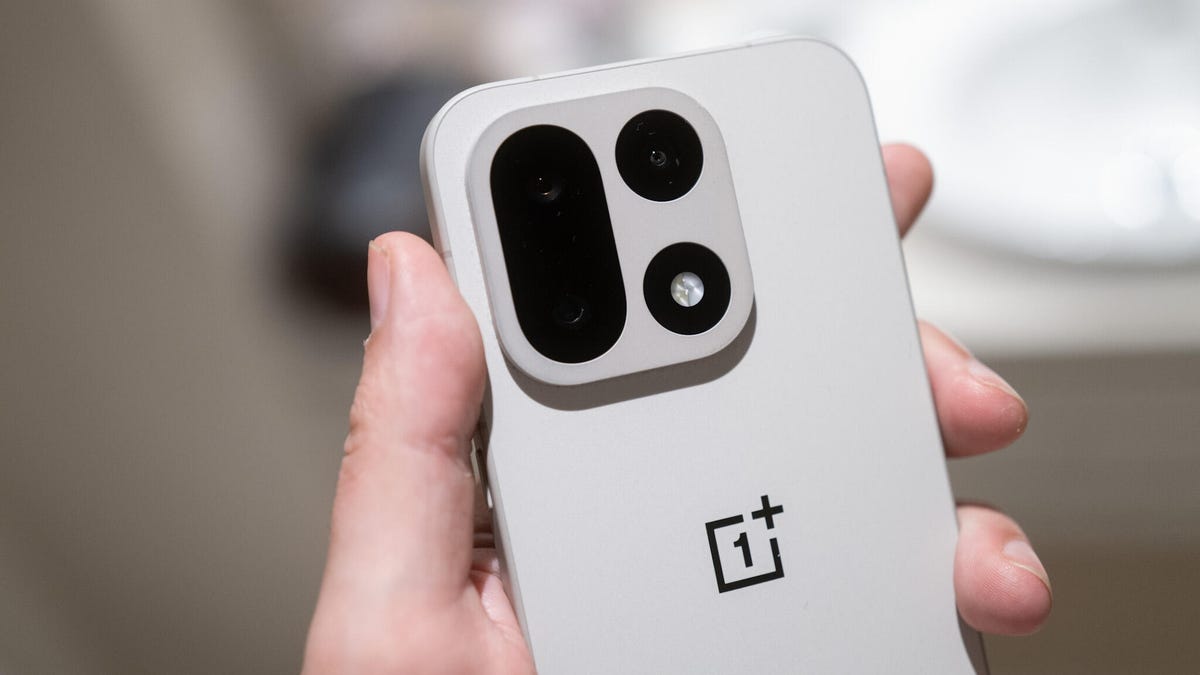Technologies
CDC endorses Pfizer and Moderna COVID-19 booster shots for all adults
The CDC’s director has accepted the committee’s recommendation.

An independent panel that advises the US Centers for Disease Control and Prevention voted unanimously Friday to recommend COVID-19 boosters for everyone age 18 and up who received Pfizer’s or Moderna’s COVID-19 vaccines, at least six months after their second dose. CDC Director Dr. Rochelle Walensky endorsed the committee’s expanded booster recommendations shortly after on Friday, making the guidance official.
«Booster shots have demonstrated the ability to safely increase people’s protection against infection and severe outcomes and are an important public health tool to strengthen our defenses against the virus as we enter the winter holidays,» Walensky said in a statement. «Based on the compelling evidence, all adults over 18 should now have equitable access to a COVID-19 booster dose.»
Everyone who received Johnson & Johnson’s vaccine at least two months ago was already eligible for a booster, as well as some vaccinated adults who got Pfizer or Moderna, including people 65 and older, adults with underlying medical conditions, and adults at a high risk of infection due to their job, such as hospital workers, teachers or grocery store workers.
Last month, the FDA and CDC gave the OK for all adults eligible for a booster to «mix and match» and get any of three available COVID-19 vaccines as a booster dose. More than 32 million Americans have already received a COVID-19 booster, according to CDC data.
Earlier on Friday, the US Food and Drug Administration expanded emergency use authorization for both the Moderna and Pfizer-BioNTech COVID-19 vaccines, clearing the booster doses for all fully vaccinated adults 18 and older. The move opened booster eligibility to millions more people and gave official backing to steps some were already taking.
The CDC committee also voted to strengthen the COVID-19 booster recommendation for individuals age 50 and older. This means the CDC now says someone who is 50 or older «should» get a booster, a younger age than the earlier recommendation that people age 65 or older should get a booster.
In addition to the recommendation everyone over 50 should get a booster, residents of long-term care facilities should also get one. For all other adults age 18 and up, the newest CDC recommendation will be that they can get a booster if they need or want one, after considering their individual benefits and risks.
Experts at the meeting expressed a need to clear up the language in the CDC’s recommendation on who should get a booster. For many adults and their health care providers, the criteria for booster eligibility was confusing and created barriers for people who may really benefit from a booster, they said.
Looking at the CDC’s extensive list of medical conditions for eligibility — which includes common conditions like being overweight, having mood disorders or ever having been a smoker — «it’s almost harder to figure out who’s not eligible,» said Dr. Grace Lee, the committee’s chair. By opening it up to all adults, the message is more clear.
The COVID-19 vaccines are highly effective in preventing hospitalization and death, but multiple studies show that the effectiveness of vaccines may start to decline after six to eight months.
Prior to Friday, at least 12 states were already encouraging all residents 18 and older to get a booster shot, regardless of their official eligibility.
Technologies
Today’s NYT Mini Crossword Answers for Saturday, Nov. 22
Here are the answers for The New York Times Mini Crossword for Nov. 22.

Looking for the most recent Mini Crossword answer? Click here for today’s Mini Crossword hints, as well as our daily answers and hints for The New York Times Wordle, Strands, Connections and Connections: Sports Edition puzzles.
Need some help with today’s Mini Crossword? It’s a long one, since it’s Saturday, and some of them were tough today. (Two Bee clues?) Read on for the answers. And if you could use some hints and guidance for daily solving, check out our Mini Crossword tips.
If you’re looking for today’s Wordle, Connections, Connections: Sports Edition and Strands answers, you can visit CNET’s NYT puzzle hints page.
Read more: Tips and Tricks for Solving The New York Times Mini Crossword
Let’s get to those Mini Crossword clues and answers.
Mini across clues and answers
1A clue: Moves (over) in one’s seat
Answer: SCOOTS
7A clue: Capital of Taiwan
Answer: TAIPEI
8A clue: ___ Bee
Answer: SPELLING
10A clue: In the style of
Answer: ALA
11A clue: Device with a keypad that’s typed on discreetly, for short
Answer: ATM
12A clue: ___ Bee
Answer: SAMANTHA
15A clue: «Family Guy» baby
Answer: STEWIE
16A clue: Sings in the Alps
Answer: YODELS
Mini down clues and answers
1D clue: Like some clams and freshly cleaned shirts
Answer: STEAMED
2D clue: What an online meeting invite gets added to, for short
Answer: CAL
3D clue: Vinegar’s counterpart
Answer: OIL
4D clue: Morphine and codeine, for two
Answer: OPIATES
5D clue: First inning in extra innings
Answer: TENTH
6D clue: Greek «S»
Answer: SIGMA
8D clue: Full of back talk
Answer: SASSY
9D clue: «Allegory of the Cave» philosopher
Answer: PLATO
13D clue: Wonderstruck feeling
Answer: AWE
14D clue: Nothin’
Answer: NIL
Technologies
Today’s NYT Connections: Sports Edition Hints and Answers for Nov. 22, #425
Here are hints and the answers for the NYT Connections: Sports Edition puzzle for Nov. 22, No. 425.

Looking for the most recent regular Connections answers? Click here for today’s Connections hints, as well as our daily answers and hints for The New York Times Mini Crossword, Wordle and Strands puzzles.
Today’s Connections: Sports Edition is a diverse one today. As a Seattle resident, I got a kick out of the purple category. If you’re struggling with today’s puzzle but still want to solve it, read on for hints and the answers.
Connections: Sports Edition is published by The Athletic, the subscription-based sports journalism site owned by The Times. It doesn’t appear in the NYT Games app, but it does in The Athletic’s own app. Or you can play it for free online.
Read more: NYT Connections: Sports Edition Puzzle Comes Out of Beta
Hints for today’s Connections: Sports Edition groups
Here are four hints for the groupings in today’s Connections: Sports Edition puzzle, ranked from the easiest yellow group to the tough (and sometimes bizarre) purple group.
Yellow group hint: Gridiron numbers.
Green group hint: The Garden State.
Blue group hint: Guarding against scores.
Purple group hint: DC, or the Evergreen State.
Answers for today’s Connections: Sports Edition groups
Yellow group: Football defensive stats.
Green group: Teams that play in New Jersey
Blue group: US soccer goalkeepers.
Purple group: Washington ____.
Read more: Wordle Cheat Sheet: Here Are the Most Popular Letters Used in English Words
What are today’s Connections: Sports Edition answers?
The yellow words in today’s Connections
The theme is football defensive stats. The four answers are hurry, interception, sack and tackle.
The green words in today’s Connections
The theme is teams that play in New Jersey. The four answers are Devils, Giants, Gotham and Red Bulls.
The blue words in today’s Connections
The theme is US soccer goalkeepers. The four answers are Howard, Naeher, Scurry and Solo.
The purple words in today’s Connections
The theme is Washington ____. The four answers are Capitals, Huskies, Nationals and Spirit.
Technologies
The iPhone 17 Pro’s Cameras Take the Fight to the OnePlus 15, and There Are Bruises
Camera showdown: The OnePlus 15’s camera should have surprised me, but it really didn’t. Meanwhile, Apple’s iPhone 17 Pro keeps on delivering in terms of photography.

The OnePlus 15 impressed my excellent colleague, David Lumb, with its superb battery life and excellent performance, especially for gaming. I wasn’t as thrilled with the cameras in my early testing, but the proof of its photography prowess comes down to how it stacks up against the competition. In this case, the iPhone 17 Pro is one of our favorite phone cameras and indeed one of the best camera phones you can buy in 2025.
For years, OnePlus has partnered with the iconic Swedish camera maker Hasselblad to work on color science and image calibration for OnePlus phones. But that partnership has ended, which puts a lot of pressure on the Chinese company to impress with its camera suite on the OnePlus 15. Throughout all these changes, Apple released the iPhone 17 Pro, which has a brand-new 48-megapixel 4x telephoto camera and carries forward the company’s reputation for excellent photography.
I headed out to the streets of Edinburgh, Scotland, to test both phone cameras in a variety of situations. It’s important to note, though, that what I consider «better» might not be what you agree with. Photography, like all art, is subjective. While, as aprofessional photographer, I prefer more natural, true-to-life tones, you may prefer imagery with more pop and colors. Take my thoughts with a grain of salt.
Note, too, that all images were taken with each phone’s standard camera mode in JPEG format, and all images have been resized using Adobe Lightroom, with no additional edits or sharpening applied. Small print done with, let’s dive in.
Straight off the bat, I’ll admit a small mistake in the photos above. I took this shot using one of the iPhone’s Photographic Styles. I think it was Gold, and so it’s no surprise that it’s given the image a more vibrant, warmer look that suits the scene incredibly well. I only had the style active for this example and the ultrawide version below.
However, I noticed that the iPhone’s exposure is broadly better, while the OnePlus’ software processing had worked so hard in reducing image noise that a lot of the texture in the floor had been lost.
Switch to the ultrawide lenses, and things do change a bit. The iPhone’s exposure above looks preferable to my eye, but the OnePlus’ shot definitely has more detail overall.
This example above is quite classic of the problems I have not just with the OnePlus 15, but also with most of OnePlus’ phones. The image is quite heavily saturated, with an electric-blue sky and vivid greens that look unnatural to me. The iPhone’s image has a much better handle on color here.
My other problem with OnePlus’ phones is how hard they go with their HDR processing, brightening up shadows and pulling back highlights, resulting in images that quite often lack depth and believable contrast. The image above is a prime example where the deep shadows under this bridge have been maintained in the iPhone’s shot, but where the OnePlus 15 has tried to lighten them so much that the image looks very overprocessed.
And to prove it’s not a one-off, this example above is a real low point for the OnePlus. It really tried to eliminate any kind of shadows in this scene, while pulling back the highlights in the sky outside far too much. The image looks fake, overprocessed and exactly what people would think of if you told them a photo was taken on a phone. By taking a far more subtle approach, the iPhone’s image is much more to my liking.
The OnePlus hasn’t gone as hard with its vendetta against shadows in the image above, but it does look like it’s ramped that saturation way up. It’s not that I don’t like vibrant colors — I do — it’s just that I want to add in that saturation should I want to, rather than having it forced on me by default.
The images above show a more muted scene and a good effort from both phones. Although taken just nine seconds apart (I checked the metadata), I do think the sun may have slightly peeked out from behind a cloud a little more in the iPhone’s shot, as the front of the building does look quite a lot brighter. Or maybe the OnePlus is going hard on the HDR again. Who knows? Either way, good details on this image from both phones.
The same scene in ultrawide does arguably look a little muted from the iPhone, at least when compared with the bold blue of the OnePlus’ shot above. Somewhere between the two would be my sweet spot. After I zoomed in on the details, the iPhone’s shot is certainly clearer, but at full screen — or on your Insta feed — that difference is negligible.
That brightness and color difference persists when taking each phone to its maximum default telephoto zoom, so maybe it doesn’t have anything to do with the sun and clouds after all. Colors aside, the iPhone’s shot above is also clearer, and its details look sharp without being overly digitally sharpened. The OnePlus’ image does have something of a «crunchiness» to it from its software processing that I don’t like as much.
Peeping close up at the pixels on each phone’s telephoto zoom shot, I definitely think the OnePlus has gone too hard with its sharpening in the image above of a person in a window.
I’m slightly more torn on this nighttime scene. The OnePlus shot above has yet again gone big on the saturation. Look at the overcooked green on the grass — it looks like it was taken at midday in the spring. The iPhone’s colors look way more natural. However, the OnePlus’ sharpening works in favor at night, delivering a shot with crisper details throughout.
And in ultrawide, I flat out prefer the OnePlus image above. Those vibrant tones look much better here, especially as they make the oranges of the building in the background stand out more.
And if we peep at those pixels again, it’s clear that the details on the OnePlus’ shot (left) are far better. Finally, a win for the OnePlus.
This final indoor low-light scene is a bit more of a mixed bag. The OnePlus’ image above is unquestionably brighter — especially the people nearest the camera — but its noise reduction has gone a bit too hard in some areas, reducing textures on clothing and hair that the iPhone hasn’t done. Overall, though, I’d say this example is a close fight.
iPhone 17 Pro vs. OnePlus 15: Which camera is better?
For me, it’s an easy victory for the iPhone 17 Pro. Almost across the board, its images are more natural looking with realistic colors, saturation levels and exposure. The OnePlus 15’s reliance on heavy-handed image processing has resulted in often garish-looking photos that are almost the opposite of what I look for in my photography. However, as I said at the beginning, that’s just my opinion.
As a photographer, I want my camera — any camera — to be able to capture the best-looking image straight out of the camera that I can then apply more edits to if I want to. But maybe you don’t want to do that and instead want a vibrant, punchy-looking shot that you can immediately share to social media. If so, maybe the OnePlus will be fine for you.
At the end of the day, deciding which phone to buy will come down to more than just the camera, so make sure to read CNET’s in-depth reviews of all of 2025’s best phones to decide which is the one for you.
-

 Technologies3 года ago
Technologies3 года agoTech Companies Need to Be Held Accountable for Security, Experts Say
-

 Technologies3 года ago
Technologies3 года agoBest Handheld Game Console in 2023
-

 Technologies3 года ago
Technologies3 года agoTighten Up Your VR Game With the Best Head Straps for Quest 2
-

 Technologies4 года ago
Technologies4 года agoBlack Friday 2021: The best deals on TVs, headphones, kitchenware, and more
-

 Technologies4 года ago
Technologies4 года agoVerum, Wickr and Threema: next generation secured messengers
-

 Technologies4 года ago
Technologies4 года agoGoogle to require vaccinations as Silicon Valley rethinks return-to-office policies
-

 Technologies4 года ago
Technologies4 года agoOlivia Harlan Dekker for Verum Messenger
-

 Technologies4 года ago
Technologies4 года agoiPhone 13 event: How to watch Apple’s big announcement tomorrow
